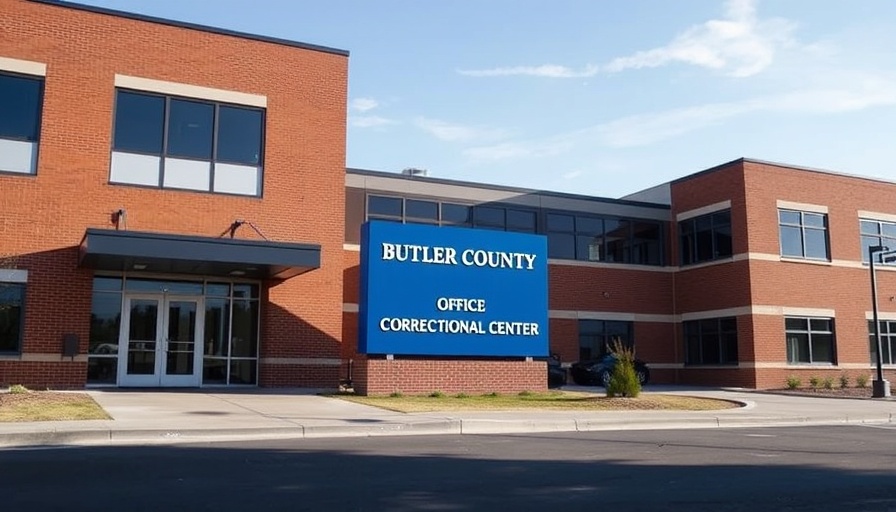
Butler County Welcomes ICE Detainees: What This Means for the Community
Butler County has recently made headlines as its sheriff confirmed that the first Immigration and Customs Enforcement (ICE) detainees have arrived at the county jail. This shift follows the approval of a new contract with ICE, reinstating a relationship that had been on hold since June 2021 when Sheriff Richard Jones canceled a similar agreement due to disagreements with the Biden administration.
The Rundown on the Newly Signed Contract
The contract, which went into effect just days ago, allows Butler County to house ICE detainees once again, with Sheriff Jones stating, "We got prisoners today." Although he withheld details on how many detainees have been brought in, the contract is expected to enable the county jail to house up to a couple hundred people who are awaiting deportation.
Butler County has a history of contracting with ICE, having done so from 2003 until mid-2021. It was during this time that the jail became known as one of five facilities in Ohio willing to accept ICE detainees—a status that has resumed now under a different political administration responsive to the sheriff's approach towards immigration enforcement.
Community Response to Law Enforcement Actions
Jones has been a vocal advocate for strict immigration enforcement, a stance that has sparked mixed reactions within the community. Notably, a sign posted at the county jail proclaiming "Illegal Aliens Here" has garnered considerable attention and opposition. A petition calling for its removal has gained over 4,500 signatures, emphasizing the depth of community dissent. Yet, Jones remains unyielding in his decision to keep the sign in place, maintaining that it reflects his commitment to the issue.
In stark contrast, local officials, including Commissioner Don Dixon, support the sheriff’s renewed contract with ICE. Dixon endorses the idea of generating revenue through housing detainees, viewing it as a practical way to utilize county facilities while managing local crime.
Economic Implications and Operational Considerations
The contract stipulates that Butler County will receive $68 per detainee per day, in addition to $36 per hour for transport services to court and other necessary hearings. This influx of funds is seen as a boon, enabling the sheriff's office to offset operational costs while dealing with local crime. However, those in opposition warn that prioritizing revenue at the expense of community sentiments may pose a long-term risk to public trust in local law enforcement.
A Historical Perspective on Immigration Enforcement
Historical context plays a significant role in understanding the dynamics involved. The county's relationship with ICE could be viewed as part of a larger narrative surrounding immigration in the United States, especially as public sentiment shifts and new policies are enacted. The return to a cooperative agreement with ICE aligns with Jones's position of enhancing local enforcement processes under what he perceives as favorable conditions. This can facilitate a resurgence of detainees in facilities that had previously catered to ICE’s requirements.
Potential Consequences and Future Outlook
The consequences of these developments are multifold. Jones's assertion that over 1,400 illegal immigrants have been incarcerated at the jail over the past year due to various state crimes adds an extra layer of complexity. It raises questions about how local law enforcement prioritizes crime versus the associated costs of long-term detention for non-violent immigrant offenses. Moreover, the objective metrics of impact remain unclear as the community grapples with the implications of re-establishing ties with federal immigration enforcement.
As Butler County navigates its renewed relationship with ICE, the narrative presents opportunities and challenges interrogating local and national immigration policies while mirroring sentiments among community members regarding immigration law enforcement.
Conclusion: Community Engagement Is Necessary
Acknowledging the multiple dimensions of this shift, it’s essential for community leaders and activists to engage in open dialogues. Understanding the local perspective while ensuring that law enforcement strategies resonate with broader community values is key in navigating the complexities of immigration enforcement. As this situation evolves, community engagement and transparency from the sheriff's office will be crucial in maintaining trust and fostering a collaborative approach to public safety.
 Add Row
Add Row  Add
Add 




Write A Comment